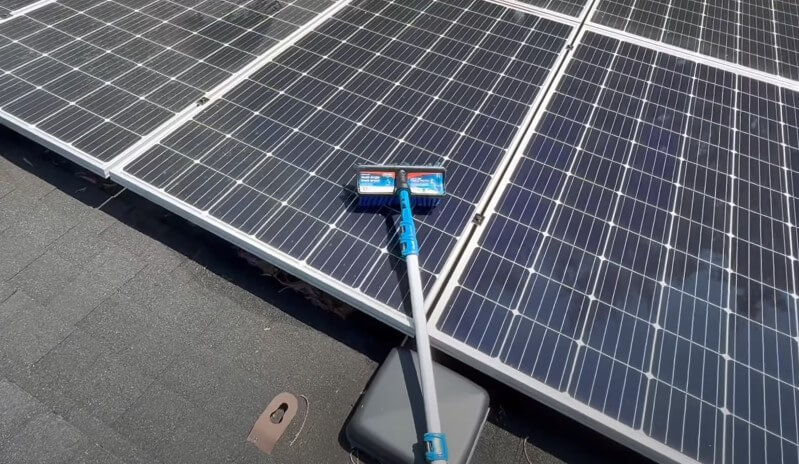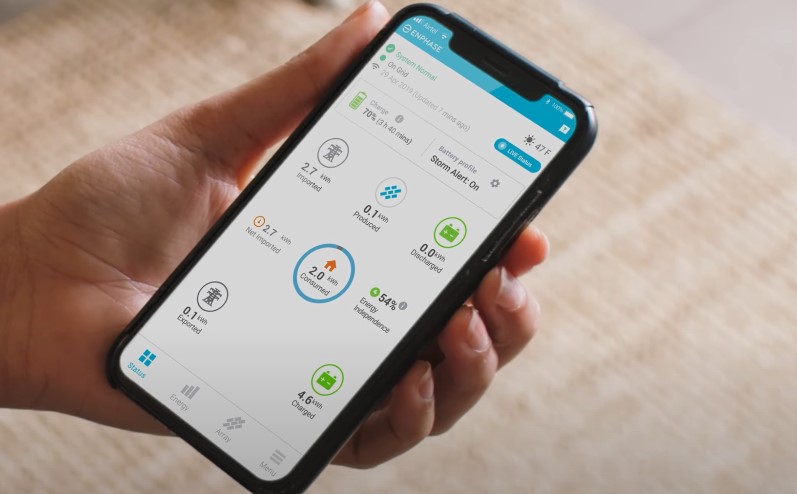Solar panels are a long-term investment that can cut energy costs and reduce dependence on traditional power sources.
Maintaining them properly not only extends their lifespan but also keeps efficiency at its highest level.
Roof care becomes even more critical once panels are installed because both structures work together to protect and power the home.
Readers will find practical ways to maintain their panels and roofs, ensuring maximum performance, safety, and return on investment.
1. Clean Solar Panels Regularly and Safely

Clean solar panels are essential for maximum energy output because even a thin layer of debris can reduce efficiency.
Dust, pollen, bird droppings, and environmental grime act like a film that blocks sunlight and weakens performance.
A consistent cleaning schedule ensures that panels stay productive year-round, and it is generally recommended to clean them at least twice annually.
Homes in regions with desert dust, frequent pollen, or pollution may require more frequent attention to maintain efficiency.
A proper cleaning routine involves safe and non-damaging tools. Choosing the right equipment and techniques makes the process both simple and effective.
Recommended methods include:
- Using soft brushes or microfiber cloths to gently remove dirt
- Applying distilled water with a small amount of mild soap to prevent residue
- Avoiding pressure washers, harsh chemicals, or abrasive pads that damage coatings
Timing also matters when cleaning. Midday heat can cause thermal stress if cool water touches hot glass.
Safer times include early morning or evening, when panel surfaces are cooler.
For homeowners who prefer expert care, The Gutter Cleaning Co solar panel cleaning offers safe, professional services tailored to your system’s needs.
2. Conduct Seasonal Visual Inspections
Regular visual checks each season keep small issues from growing into costly repairs.
Panels face constant exposure to wind, rain, and temperature fluctuations, which can gradually cause wear.
Inspections allow homeowners to spot early warning signs that might otherwise remain unnoticed until efficiency drops.
When inspecting panels, it is important to look for both surface and structural issues. Key elements to watch for include:
- Cracks, discoloration, or clouded glass that reduce light penetration
- Warped or loosened mounts that compromise panel stability
- Animal nests, leaves, or pooling water that cause blockages or roof damage
- Exposed or damaged wiring that may interfere with system safety
Findings should be documented in a simple log, noting any irregularities and the dates they occurred.
3. Monitor Solar System Output

Tracking system output provides an ongoing picture of solar performance.
Most modern installations include mobile apps or online dashboards, making it easy to monitor energy production from anywhere.
A dip in output that doesn’t align with weather conditions is often a sign of a hidden problem.
Effective monitoring involves more than occasional glances. Homeowners can make the process more reliable by:
- Setting alerts to track sudden changes in production
- Comparing daily or weekly output against historical averages
- Keeping a monthly log to highlight gradual declines that may otherwise go unnoticed
Small performance drops often indicate shading, loose connections, or inverter malfunctions. Early detection means faster repairs and less energy loss.
4. Trim Overhanging Trees and Vegetation
Trees offer shade and beauty, but can significantly reduce solar efficiency when branches block sunlight.
Even one shaded panel can reduce the performance of an entire string.
Regular trimming ensures maximum exposure to sunlight while also protecting both panels and roof surfaces.
- Preventing shading that lowers overall panel efficiency
- Reducing the risk of falling branches that could crack glass or damage mounts
- Limiting leaf buildup that encourages mold or moisture problems
Tree trimming should be handled with care, particularly when branches grow near power lines or rooftops. Professional services are often the safest choice.
In addition to boosting performance, controlled vegetation helps preserve the health of the roof, creating a more reliable system overall.
5. Check Roof Integrity Alongside Panel Care

Panels rely on the strength of the roof beneath them. If shingles loosen, water pools, or mold spreads, the entire installation can become vulnerable.
A compromised roof shortens panel life and may even require the removal of equipment for repairs.
Roof inspections should focus on structural health and warning signs such as:
- Loose or missing shingles that expose the underlayment
- Signs of leaks, moisture stains, or mold growth inside the attic
- Pooling water after rainstorms signals poor drainage
Pairing roof checks with solar maintenance saves time and ensures that neither task is overlooked.
Quick repairs protect both the home and the solar array, reducing long-term costs and preventing potential safety issues.
A strong, well-maintained roof guarantees that panels remain stable for decades.
6. Protect and Maintain Inverters, Wiring & Batteries
Solar systems depend on more than panels alone.
Inverters, wiring, and batteries work together to keep electricity flowing safely and efficiently.
Regular attention to these components prevents disruptions and extends system life.
Homeowners can take several steps to protect their system’s electrical elements:
- Inspect inverters for warning lights or unusual error codes
- Look for wear, corrosion, or rodent damage on cables
- Keep batteries in a temperature-controlled environment and clean their terminals
- Plan for inverter replacement every 10 to 15 years
Neglecting these parts often leads to inefficiencies that panels alone cannot fix.
7. Manage Weather-Related Debris (Snow, Ice, Storms)

Weather challenges affect both roofs and solar systems, often leaving debris that hinders performance.
Snow accumulation blocks sunlight, while storms may shift mounts or crack panels.
Seasonal preparation reduces these risks and preserves energy output.
Proper debris management should include:
- Using a soft broom or roof rake designed for solar applications to clear snow
- Checking panel alignment and glass integrity after storms
- Allowing ice to melt naturally or gently applying lukewarm water to speed thawing
- Removing leaves and twigs promptly to prevent water pooling and mold
Avoid scraping ice or using sharp objects, as they can leave permanent marks on the glass.
Staying vigilant after major weather events ensures that both panels and roof remain functional and safe.
8. Schedule Professional Inspections Every Few Years
View this post on Instagram
Even with regular at-home care, professional inspections provide a deeper level of analysis.
Certified technicians bring specialized tools that measure performance and safety in ways homeowners cannot.
A visit every one to three years keeps the system in top condition and ensures compliance with many warranties.
During a professional inspection, technicians typically:
- Test voltage, grounding, and electrical output
- Assess thermal performance using advanced equipment
- Check mounting systems for wear, corrosion, or instability
Maintenance records should be organized and saved after each visit.
Regular professional involvement ensures long-term efficiency while minimizing repair risks.
The Bottom Line
Solar panels and roofs work as a single system, and both need regular attention to maximize performance and longevity.
Consistent cleaning, seasonal checks, and roof care protect investments while keeping homes safe and efficient.
Logging maintenance and consulting with professionals every few years ensures that energy savings remain high and system reliability endures for decades.

